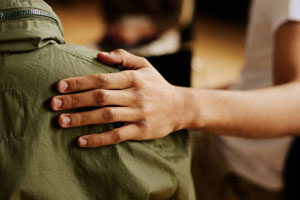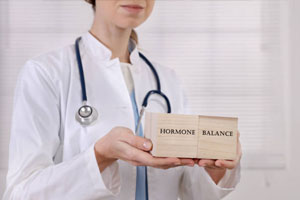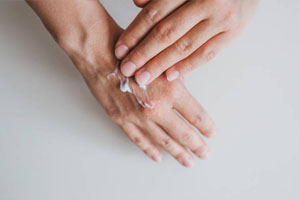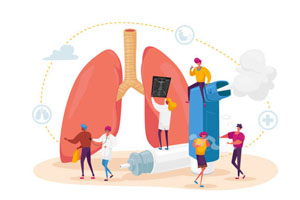Explore why staying sun-safe is essential year-round Learn about the impact of UV radiation, health risks, and practical strategies to safeguard your skin and well-being Prioritize sun safety for a healthier life
Why Is It Important to Stay Sun-Safe? Sun safety is not just a recommendation; it's a necessity for maintaining good health. Protecting yourself from the sun's harmful ultraviolet (UV) radiation is crucial to prevent skin damage, premature aging, and the risk of skin cancer. In this article, we'll explore the reasons behind the importance of staying sun-safe and provide practical tips for effective sun protection. Whether you're planning a day at the beach or going for a walk in your neighborhood, understanding the significance of sun safety is essential for your overall well-being.
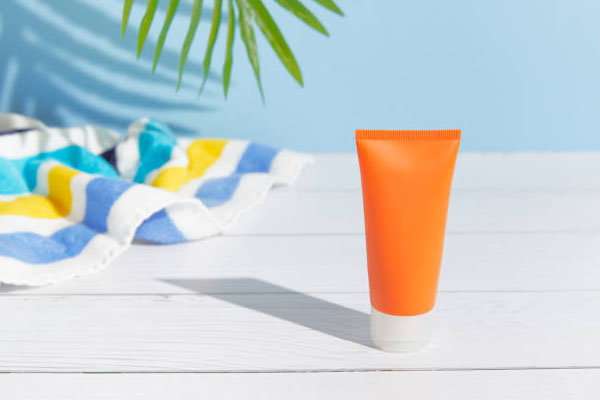
Understanding the Importance of Sun Safety
Sun Safety: A Vital Aspect of Health
Discuss the significance of sun safety as an integral part of maintaining overall health and well-being.
The Dangers of Excessive Sun Exposure
Skin Damage and Premature Aging
Explain how prolonged sun exposure can lead to skin damage, premature aging, and the development of wrinkles and fine lines.
Risk of Skin Cancer
Highlight the direct link between excessive sun exposure and the increased risk of skin cancer, including melanoma and non-melanoma skin cancers.
Eye Damage
Discuss the potential harm to the eyes from UV radiation, which can lead to conditions like cataracts and pterygium.
The Role of UV Radiation
Types of UV Radiation
Explain the different types of UV radiation, UVA and UVB, and their distinct effects on the skin and health.
How UV Radiation Affects the Skin
Detail the mechanisms by which UV radiation can damage the skin, including DNA damage and the triggering of skin conditions like sunburn and hyperpigmentation.
Sun Safety Measures
Using Sunscreen Effectively
Provide guidelines on selecting and applying sunscreen, emphasizing the importance of broad-spectrum protection and proper application techniques.
Wearing Protective Clothing
Highlight the role of clothing, sunglasses, and hats in protecting the skin and eyes from harmful UV rays.
Seeking Shade
Explain the benefits of staying in the shade during peak sun hours and the significance of choosing the right shade sources.
Importance of Regular Skin Checks
Discuss the importance of routine skin examinations and self-checks to detect any potential skin issues early and ensure timely medical intervention.
Sun Safety FAQs (Frequently Asked Questions)
Prepare readers for the following section that addresses common questions about sun safety.
1. The Dangers of Excessive Sun Exposure
Skin Damage and Premature Aging
Ultraviolet (UV) Radiation and Skin
Explain how exposure to UV radiation from the sun's rays can cause damage to the skin. Describe how UV rays penetrate the skin's layers and the effects this exposure can have on skin health.
Collagen and Elasticity
Discuss the impact of UV radiation on collagen and elastin fibers in the skin. Explain how the breakdown of these proteins can lead to the loss of skin elasticity and the formation of wrinkles.
Development of Fine Lines and Wrinkles
Detail how prolonged sun exposure can lead to the development of fine lines and wrinkles, particularly around the eyes and mouth. Discuss the role of UV radiation in premature aging.
Hyperpigmentation and Sunspots
Explain how UV radiation can stimulate the production of melanin in the skin, leading to the development of hyperpigmentation, sunspots, and uneven skin tone.
Dryness and Dehydration
Discuss how excessive sun exposure can cause skin dryness and dehydration. Explain the importance of proper hydration for skin health and the role of sun exposure in skin moisture loss.
Reduced Skin Barrier Function
Describe how UV radiation can weaken the skin's natural barrier function, making it more vulnerable to environmental factors and increasing the risk of skin conditions and infections.
Risk of Skin Cancer
Ultraviolet (UV) Radiation and Skin Cancer
Explain the direct link between prolonged exposure to UV radiation and an increased risk of skin cancer. Describe how UV radiation can damage the DNA in skin cells and lead to mutations that trigger the development of cancerous growths.
Melanoma Skin Cancer
Discuss the specific risk of melanoma, a deadly form of skin cancer, associated with excessive sun exposure. Describe the characteristics of melanoma and its prevalence in sun-exposed areas of the body.
Non-Melanoma Skin Cancers
Detail the increased risk of non-melanoma skin cancers, such as basal cell carcinoma and squamous cell carcinoma, due to UV exposure. Explain the differences between these types of skin cancers and their potential consequences.
Impact on Skin Cancer Rates
Discuss the global impact of sun exposure on skin cancer rates and the regions most affected by high UV radiation. Highlight the role of sun safety practices in reducing the risk of skin cancer.
The Importance of Skin Cancer Prevention
Emphasize the importance of skin cancer prevention through sun-safe practices and regular skin examinations. Encourage readers to be proactive in reducing their risk of skin cancer.
Eye Damage
UV Radiation and Eye Health
Explain the potential harm to the eyes caused by exposure to ultraviolet (UV) radiation. Discuss how UV rays can affect various parts of the eye and lead to eye health issues.
Cataracts and UV Exposure
Detail the connection between UV exposure and the development of cataracts. Explain how prolonged UV radiation can lead to clouding of the eye's natural lens and the vision impairment it causes.
Pterygium: "Surfer's Eye"
Discuss pterygium, also known as "surfer's eye," and its association with UV radiation. Describe how pterygium is characterized by the growth of tissue on the white part of the eye and its potential impact on vision.
Photokeratitis: "Snow Blindness"
Explain the condition of photokeratitis, often referred to as "snow blindness." Describe how it can result from intense exposure to UV radiation, causing temporary eye discomfort and vision problems.
Importance of UV-Protective Eyewear
Highlight the significance of wearing UV-protective sunglasses to shield the eyes from harmful UV rays. Discuss the features to look for in sunglasses for optimal eye protection.
Preventing Eye Damage from the Sun
Provide guidance on how to prevent eye damage from UV exposure, including the use of sunglasses, wide-brimmed hats, and seeking shade during sunny days. Emphasize the importance of regular eye check-ups for early detection of eye issues related to sun exposure.
2. The Role of UV Radiation
Types of UV Radiation
UVA (Ultraviolet A)
Explain the characteristics of UVA radiation, often referred to as "aging rays." Discuss how UVA rays penetrate the skin more deeply and are linked to premature aging, including the formation of wrinkles and fine lines.
UVB (Ultraviolet B)
Detail the properties of UVB radiation, known as "burning rays." Explain how UVB rays primarily affect the skin's surface, leading to sunburn and the risk of skin cancer, including melanoma.
UVC (Ultraviolet C)
Discuss UVC radiation, the most dangerous but largely absorbed by the Earth's atmosphere. Explain its limited impact on skin and health due to its absorption in the upper atmosphere.
How UV Radiation Affects the Skin
Direct and Indirect DNA Damage
Explain how UV radiation can directly damage the DNA in skin cells, leading to mutations and potential skin cancer. Discuss indirect DNA damage caused by the generation of reactive oxygen species (ROS) in the skin.
Skin Inflammation and Sunburn
Describe how UV radiation can trigger an inflammatory response in the skin, leading to the characteristic redness, pain, and swelling associated with sunburn. Discuss the role of cytokines and other factors in this process.
Photoaging and Collagen Breakdown
Detail the mechanisms by which UV radiation leads to photoaging, including the breakdown of collagen and elastin fibers. Discuss the long-term effects of collagen loss on skin structure and appearance.
Development of Skin Hyperpigmentation
Explain how UV radiation can stimulate melanin production in the skin, leading to hyperpigmentation, such as freckles and age spots. Discuss the role of melanocytes and melanin in this process.
Impact on Skin Barrier Function
Discuss how UV radiation can impair the skin's natural barrier function, making it more susceptible to environmental factors, allergies, and skin conditions. Emphasize the importance of maintaining a healthy skin barrier.
3. Sun Safety Measures
Using Sunscreen Effectively
Choosing the Right Sunscreen
Provide guidance on selecting the appropriate sunscreen, emphasizing the importance of broad-spectrum protection with an SPF rating. Discuss considerations for different skin types and activities.
Proper Application Techniques
Explain the correct methods for applying sunscreen to ensure even coverage. Discuss the importance of using an adequate amount and reapplying it at regular intervals, especially during prolonged sun exposure.
Sunscreen for Face and Body
Differentiate between sunscreens designed for the face and body. Discuss the use of specialized facial sunscreens and the significance of protecting sensitive facial skin.
Water-Resistant Sunscreen
Discuss the benefits of water-resistant sunscreen for activities involving water, such as swimming or water sports. Explain how to apply and reapply water-resistant sunscreen effectively.
Wearing Protective Clothing
Sun-Protective Clothing
Highlight the role of sun-protective clothing in shielding the skin from UV radiation. Discuss the features of UV-protective clothing, such as UPF (Ultraviolet Protection Factor) ratings.
Sunglasses for Eye Protection
Emphasize the importance of wearing sunglasses with UV protection to shield the eyes from harmful UV rays. Explain how to choose sunglasses that offer adequate UV defense.
Wide-Brimmed Hats
Discuss the benefits of wearing wide-brimmed hats to protect the face, neck, and ears from sun exposure. Provide guidance on selecting appropriate sun hats.
Seeking Shade
Importance of Shade in Sun Safety
Explain why seeking shade is a crucial sun safety practice. Discuss how shade provides relief from direct UV exposure and reduces the risk of sunburn and heat-related issues.
Identifying Reliable Shade Sources
Guide readers on how to identify reliable sources of shade, such as natural shade from trees and constructed shade structures. Discuss the significance of choosing safe and effective shade options.
Using Shade During Peak Sun Hours
Highlight the importance of staying in the shade during peak sun hours when UV radiation is at its strongest. Provide tips on planning outdoor activities to avoid excessive sun exposure.
UV-Blocking Umbrellas
Discuss the use of UV-blocking umbrellas as portable shade sources. Explain how to use umbrellas effectively for sun protection when spending time outdoors.
4. Importance of Regular Skin Checks
Early Detection of Skin Issues
Explain how regular skin checks play a vital role in early detection of skin problems, including unusual moles, growths, or changes in existing skin conditions. Emphasize the significance of identifying issues in their early stages for effective treatment.
Monitoring Changes Over Time
Discuss the importance of monitoring changes in the skin over time. Explain how consistent skin checks allow individuals to track any alterations in the size, shape, color, or texture of moles and other skin features.
Reducing Skin Cancer Risk
Highlight the role of regular skin checks in reducing the risk of skin cancer. Explain how identifying and addressing suspicious skin abnormalities can prevent the progression of potential skin cancers, including melanoma.
Self-Examinations and Professional Checks
Differentiate between self-examinations and professional skin checks. Provide guidance on how individuals can perform regular self-examinations and when it is advisable to seek a professional dermatologist's evaluation.
Understanding ABCDE for Moles
Introduce the ABCDE rule for identifying potentially concerning moles, covering Asymmetry, Border irregularity, Color variation, Diameter, and Evolution. Explain how this rule can guide individuals during self-examinations.
Role of Dermatologists
Discuss the essential role of dermatologists in skin checks. Explain why individuals should consult dermatologists for comprehensive skin examinations, especially if they have a history of skin cancer or risk factors.
5. Sun Safety FAQs (Frequently Asked Questions)
Q1: What are the different types of UV radiation, and how do they affect the skin?
A: There are three main types of UV radiation: UVA, UVB, and UVC. UVA and UVB can impact the skin, with UVA contributing to premature aging and UVB causing sunburn and increasing the risk of skin cancer. UVC is mostly absorbed by the atmosphere and has minimal effect on the skin.
Q2: How can I choose the right sunscreen for sun protection?
A: When selecting sunscreen, look for broad-spectrum protection with an SPF rating suitable for your skin type and activities. Choose water-resistant sunscreen for water-related activities and consider using specialized facial sunscreens for delicate facial skin.
Q3: Why is it important to seek shade during peak sun hours?
A: Seeking shade during peak sun hours, when UV radiation is strongest, is crucial to reduce the risk of sunburn and heat-related issues. It provides relief from direct UV exposure and helps protect your skin and eyes from harm.
Q4: What are the benefits of regular skin checks for sun safety?
A: Regular skin checks play a vital role in the early detection of skin issues, including potential skin cancers. They help monitor changes in moles and other skin features, reducing skin cancer risks and ensuring timely treatment.
Q5: How can I recognize concerning moles using the ABCDE rule?
A: The ABCDE rule helps identify potentially concerning moles. Look for moles with Asymmetry, irregular Borders, varying Colors, a Diameter larger than a pencil eraser, and moles that are Evolving or changing over time. Consult a dermatologist if you notice such moles during self-examination.


